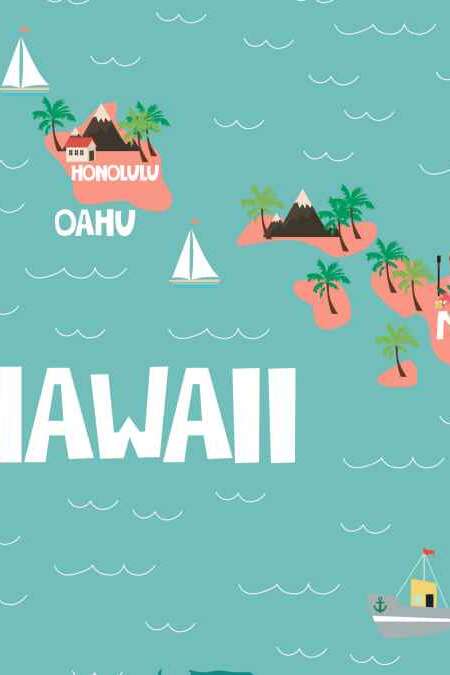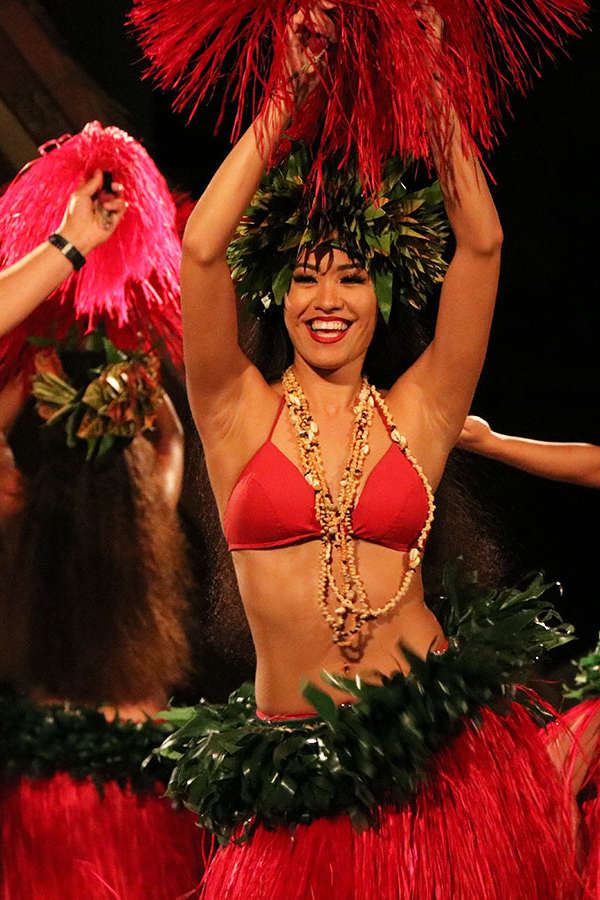If you’re in Hawaii for the first time, you might be surprised when you first hear Pidgin.
Hawaiian Pidgin sounds a lot like English, but may seem incomprehensible to English speakers. This is because the language uses a lot of English vocabulary, but there’s a lot more to it than that.
A Pidgin history
Technically, what’s known as ‘Pidgin’ in Hawaii isn’t a pidgin at all.
Simply put, a pidgin is a mash of two (or more) languages that’s used temporarily between people who don’t have a common language.
When a pidgin is used for long enough that it develops its own grammar, the pidgin evolves into a creole. The biggest functional difference between the two is that a creole can actually be a first language.
Hawaiian Pidgin is officially referred to as Hawaiian Creole English (HCE)—‘creole’ being defined as a language that developed from a mix of other different languages—but it’s commonly referred to as simply “Pidgin.”
Developed by immigrant plantation workers as a common language to communicate with each other, Pidgin developed from a hodgepodge of Hawaiian, English, Japanese, Portuguese, and Cantonese, among other immigrant languages.
Today, the language mainly consists of English and Hawaiian, with a few other loanwords that betray its plantation heritage.
But just because Pidgin sounds like English doesn’t mean it’s easy to understand!
The grammatical structure and pronunciation of Pidgin is largely different from that of English, meaning you might understand all the words a local is saying to you without comprehending their meaning.
How to pronounce Pidgin words
Many pidgin words or phrases that originated in English may be harder to understand due to pidgin’s original pronunciation:
Th sounds either drop the h (think > tink) or are pronounced as a d (that > dat).
R, when preceded by a vowel, is dropped (more better > mo’ bettah)
Likewise, L sounds at the end of words are pronounced like o (people > peepo)
Pidgin words you think you know (but probably don’t)
Pidgin mostly borrows words from English, but sometimes uses those words in original ways. A lot of Hawaiian words are also commonly used, but you can find some those in another blog post.
Here’s a list of English words, and how they’re used in Pidgin:
- Brah – bro, as in brother. Also ‘braddah’ or ‘cuz’; used as a friendly term to refer to someone, like ‘dude’ or ‘bro.’
- “Eh brah, you da kine, yeah?”
- Hey dude, you’re that guy, right?
- “Eh brah, you da kine, yeah?”
- Choke – a lot, plenty.
- “Da kine luau get choke food!”
- That luau has a lot of food!
- “Da kine luau get choke food!”
- Da kine – literally “the kind”; used as a placeholder like “stuff” or “thingamajig.” This phrase can be used as a noun, verb, adjective or adverb and can mean literally anything, depending on how it’s used.
- “Brah, you wen see da kine go da kine afta da kine? Was so da kine!”
- ???
- “Brah, you wen see da kine go da kine afta da kine? Was so da kine!”
- Grind – Eat, especially when get choke food.
- “You hungry, yeah? Like grind or wat??”
- Are you hungry? Do you want to go eat?
- “You hungry, yeah? Like grind or wat??”
- One – used as the article “a,” such as when asking:
- “Brah, can get one ride or what?”
- Bro, can I get a ride?
- “Brah, can get one ride or what?”
- Shaka – a gesture in which the thumb and pinky of one hand are extended. The origin of the shaka is unclear and the meaning of the gesture itself is inexact, but it’s commonly understood to share goodwill and the aloha spirit!
- Shoyu – soy sauce. A commonly used condiment in the islands
- Stay – used as “is/are/to be.” Unlike English, Pidgin doesn’t always require the word “is.” In situations where it is required, the term “stay” is used instead:
- “Eh, where you stay?”
- Hey, where are you?
- “Eh, where you stay?”
- Try – please, do (something).
- “Try wait”
- Please wait / Hold on a second.
- “Try wait”
This quick primer on Pidgin should help you navigate your first stay in the islands.
Note that Pidgin is a different language from Hawaiian, which has its own vocabulary, grammar, and writing system.
Pidgin also isn’t simply “broken English”: it has its own grammar structure and stable vocabulary, not to mention its own history and cultural background which make it a distinct language.
As a mix of different languages and influences, Pidgin as a language aptly reflects the mix of different peoples and cultures that visit, influence, and inhabit the Hawaiian Islands.
Pidgin is commonly used by locals and often thrown into everyday English conversations, so don’t be surprised if you hear it: it’s just another way that the unique culture of Hawaii is reflected in its people.
There’s a lot more to pidgin than what’s written here, so if you have any questions, sound off in the comments!
Jason
Having grown up in Honolulu, Jason writes for HawaiiActivities to help share the beauty of the islands with visitors.




Just want to say I like your article. And that even though some refer to it as a pidgin or a creole the factory means you’re right it is not broken English. It’s sad that some people consider it broken English and that would make the people who speak it seem stupid. That being far from the facts I feel bad when people who speak it themselves feel that it’s broken English because they’ve been looked down upon which is just completely out of line for whoever is looking down upon them. I know I’m putting this down in proper English. I have immersed myself for 29 years in the local community 14 on Maui 15 on Oahu. Oh, brah I I going to tell you, I tink pidgin I talk pidgin I no mo tink fo talk pidgin. I jus let em fly so to speak. Sometimes I end up texting small kine pidgin big time I no tink noI jus go. Den my mainland ohana o fop tink, wat da hek he wen say🤣!! Oh I get on a roll no can stop Pidgin n California English stay holding hands in my Pu’uwai 🤣🤣🤣 my one friend tink it’s awesome that I stay Hawaii so long I come dis way I love my home now I neva goin leave.